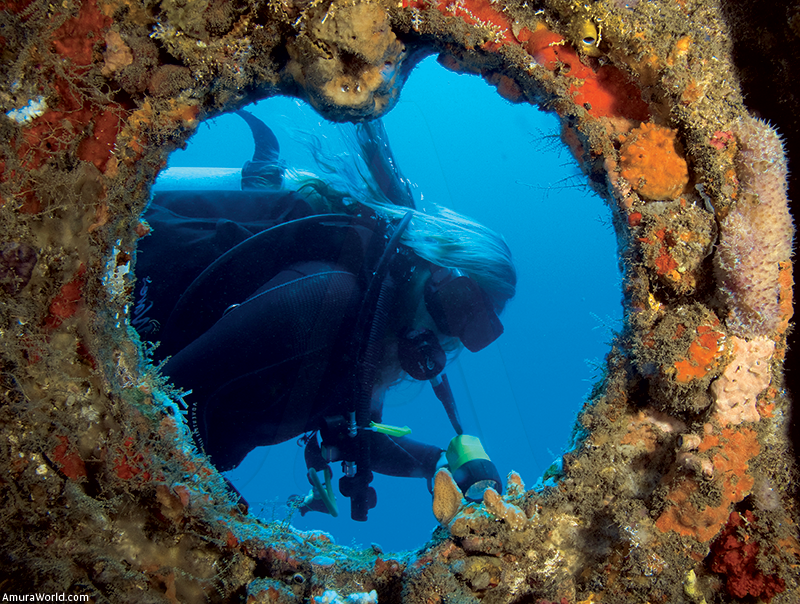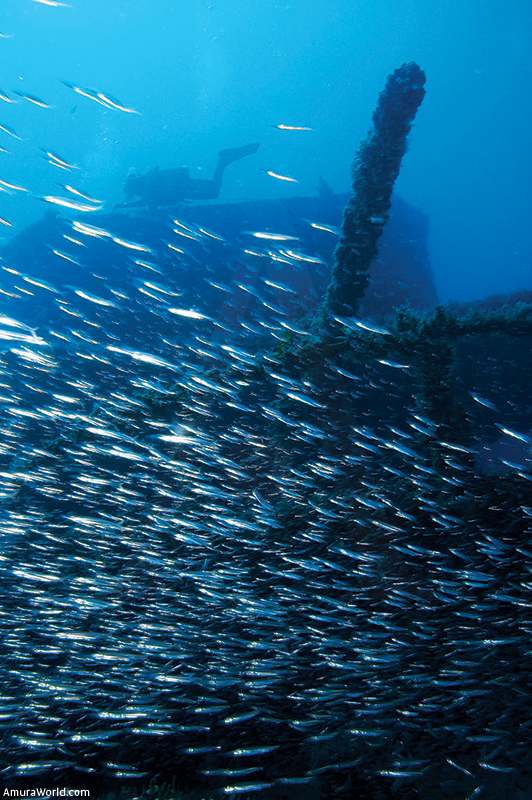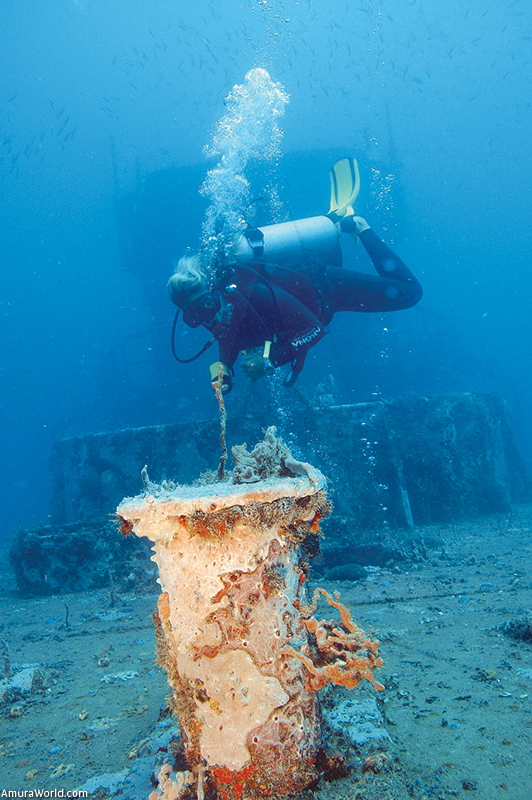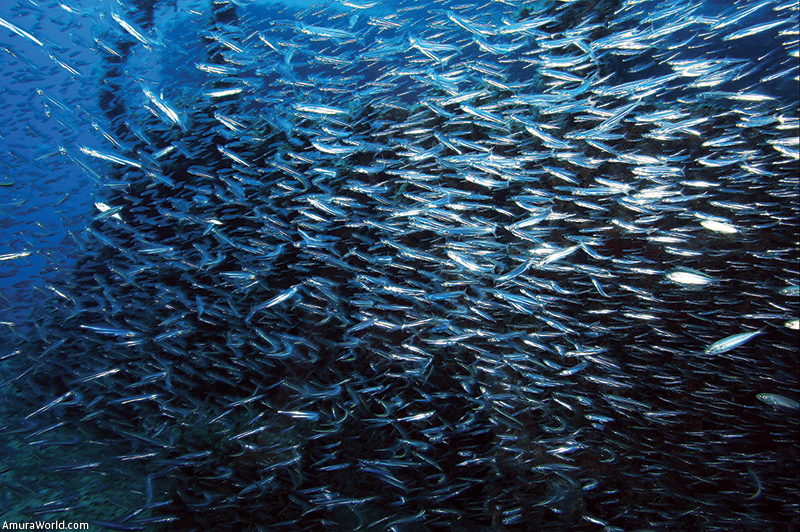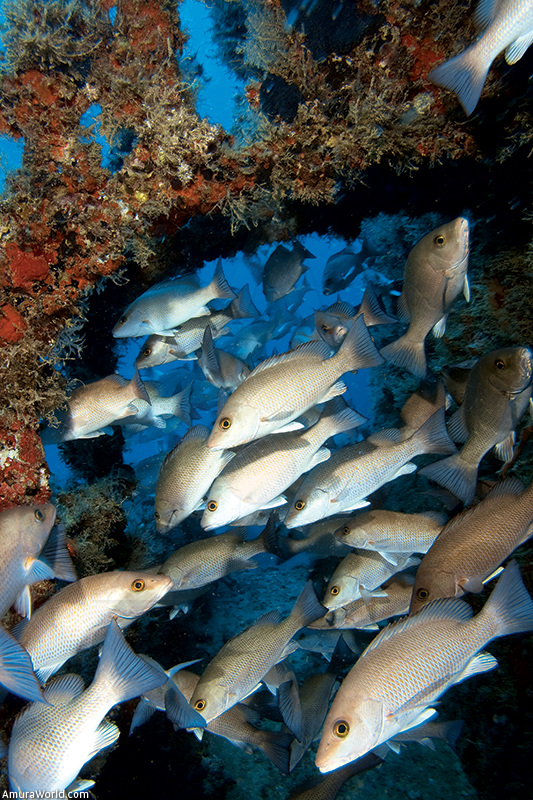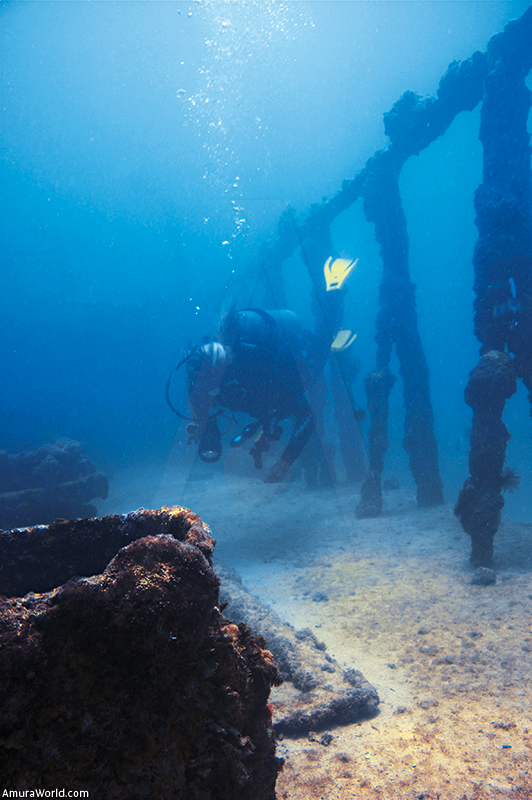Home to a myriad of marine species, sunken ships gradually become artificial coral reefs, their rusted hulls eventually becoming sanctuaries that are of great historical and architectural interest. As time goes by, marine vegetation becomes encrusted on the overall structure, as eels, octopuses and conger-eels find refugee inside these ships, rightfully seeking the refuge and protection that is found inside its compartments. Smaller fish tend to swim around the surface of the hull, while larger predators roam in the hopes of catching and feeding on their smaller counterparts. The events that unfold in and around these ships make for an extraordinary diving experience. A few of these shipwrecks on the ocean floor are marked specifically to guide divers when swimming inside the hull, while others are fitted with water-proof flyers that provide additional information to the divers about the wreckage.
Throughout history, the remains of numerous unidentified shipwrecks that now rest at the very bottom of the ocean floor have only been explored by specially trained divers, making it impossible for amateur diversto reach those depths without special, and extremely costly, equipment. These ships where usually built around iron hulls, yet there are cases where ships hundreds of years older are found at the very same depths which, seemingly untouched, harbor a vast and unique collection of rare artifacts. Nowadays, it is possible to readily access a vast amount of information about recent shipwrecks. An example of this would be the Ferri Salvatierra, which was sailing from La Paz to Mazatlan before tragedy struck.
Normally, one can freely dive in and around these shipwrecks, although some divers will require a special permit to access those that are deemed off-limits, as it’s the case with historical shipwrecks and military vessels. Some ships have been deliberately sunk in shallow waters, to create artificial coral reefs, as well as to make it easier for amateur divers to explore a shipwreck up close. The overall structure of these ships tends to be firmer and safer for divers, since these ships have been rid of any entanglements or loose equipment that could be hazardous for divers. These, of course, are suitable for practice and recreational diving.
What sort of training is required?
Divers must be especially trained for these types of explorations. Additionally, they must own the proper equipment to attempt these dives, given that the risks are numerous, and divers can become trapped inside the hull of a ship if not properly trained.
This sort of diving experience is not suitable for people with conditions such as claustrophobia, given that the inside of a ship is usually filled with narrow corridors, poor lighting conditions, and few exits.
What kind of equipment is required?
Gloves are a must to protect ones hands from rough and sharp edges; a knife to cut cable, make leverage, and/or make measurements; a primary and secondary light source, depending on how deep the diver is willing to go inside the ship; a spool fitted with cable to mark ones way back to surface of the water, and a pony bottle as a secondary oxygen source, in case of emergency.
What are the recommended guidelines to follow?
1. Follow the rule of thirds for the consumption of air: One third to descend and explore, another third to return to the point of entry, and a third for any unexpected situation that may delay resurfacing.
2. Dive with enriched oxygen canisters, which increase the time one can be underwater before one experiences dangerous levels of decompression.
3. Broad and ample legs strokes to avoid any tampering with the sediments that lay on the surface.
4. Dive in an organized fashion so as to not lose ones sense of direction while exploring the various compartments of the hull.
Which is the best point of entry?
A significant amount of ships are fitted with a floating device that reaches the surface, making it easier for divers to spot where a shipwreck is located. If this is not the case, it is advisable for the divers to tie a similar device to the ship.
It is imperative for divers to take a spool fitted with wire to navigate around the ship, and also to indicate where there is an exit point, especially in low visibility conditions.
Be a responsable diver:
1. Given that most shipwrecks are of historical value, it is prohibited to extract or tamper with the objects that reside inside the ship. Divers are subjected to fines or imprisonment if these rules are not followed.
2.One must take extreme precautions with ships fitted with wooden hulls, because of its unstable estructure that can buried a diver.
3. Some parts of the ocean harbor shipwrecks from the Second World War. Divers are advised to never, under any circumstance, touch a torpedo o underwater mine, due to the risk of sudden explosion.
Text: Gerardo del Villar Cervantes ± Photo: Gerardo del Villar Cervantes

